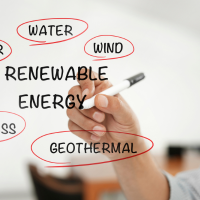Deadline: 12 May 2020
Shared Services Canada (SSC) and Environment and Climate Change Canada (ECCC) are seeking a solution that will enable recycling of e-waste plastics and metals in Canada while respecting domestic and international requirements and obligations.
This challenge is highly relevant to SSC and ECCC’s mandate and the federal government’s commitment to move Canada towards a zero plastic waste economy. Plastics are valuable materials and resources because of their unrivalled functionality, durability, and low cost. Plastics are used in almost every aspect of Canadians’ daily lives and provide significant economic, environmental and social benefits.
E-Waste recyclers in Canada currently lack the technologies to decontaminate plastics removed from e-waste at the dismantling stage. Such technologies would divert e-waste plastics from landfills without exporting and recycling it outside of Canada. These technologies would also enable the conversion of e-waste plastics into valuable materials or molecules.
This challenge will support domestic action and innovation on plastics. This challenge also relates directly to the Treasury Board Secretariat (TBS) Greening Government Strategy, which looks to reduce the environmental impact of waste associated with harmful and hazardous chemicals used and disposed of by the Government of Canada. In October 2009, the CCME released the Canada-Wide Action Plan for Extended Producer Responsibility (EPR). This Canada-wide action plan seeks to shift full life-cycle costs of a product to the product’s producers. Electronics and electrical products were included within the first phase of this action plan. The CCME continues to work to harmonize and expand existing EPR programs in Canada for e-waste.
Outcomes
Essential (mandatory) outcomes
- The proposed solution must:
- Be a functional, scalable, cost-effective, and energy efficient solution to e-waste plastics;
- Be informed by science, be evidence-based and consider environmental, social, and economic impacts;
- Describe the proposed technology and/or business-model and how it compares with existing management operations/activities for e-waste plastics, and explain its benefits and drawbacks throughout the entire life-cycle (i.e., from input, production, use, recovery/recycle, and final waste disposal);
- Ensure that chemicals of concern i.e. cobalt, lead, mercury, cadmium, brominated flame retardants, perfluorinated compounds (PFCs), phthalates, and acids are properly managed and are not released into the environment or do not result in human health exposure;
- Decontaminate plastics removed from e-waste at the dismantling stage;
- Enable the conversion of decontaminated e-waste plastics into valuable materials or molecules;
- Divert e-waste plastics from landfills without exporting and recycling it outside of Canada;
- Have no adverse environmental impacts.
Additional Outcomes
- The proposed solution should:
- Be a functional, scalable, cost-effective, and energy efficient solution to e-waste metals and heavy metals;
- Demonstrate improved value-recovery for e-waste metals and heavy metals;
- Enable the recycling and/or processing of rare earth elements (such as magnets in hard drives and mobile device screens) recovered from e-waste after being decoupled from the plastic components;
- Demonstrate improved potential for repair, refurbishment, and remanufacturing of e-waste plastics and/or metals;
- Meet or exceed the requirements for the Greening Government Strategy, which looks to reduce the environmental impact of waste associated with the chemicals and metals found in electrical and electronic equipment products used by the Government of Canada.
Funding Information
The maximum funding available for any Phase 1 contract resulting from this Challenge is $150,000.00 CAD excluding applicable taxes, shipping, travel and living expenses, as required, for up to 6 months (excluding submission of the final report).
Eligibility Criteria
Solution proposals can only be submitted by a small business that meets all of the following criteria:
- for profit
- incorporated in Canada (federally or provincially)
- 499 or fewer full-time equivalent (FTE) employees
- research and development activities that take place in Canada
- 50% or more of its annual wages, salaries and fees are currently paid to employees and contractors who spend the majority of their time working in Canada
- 50% or more of its FTE employees have Canada as their ordinary place of work
- 50% or more of its senior executives (Vice President and above) have Canada as their principal residence
For more information, visit https://www.ic.gc.ca/eic/site/101.nsf/eng/00085.html








































